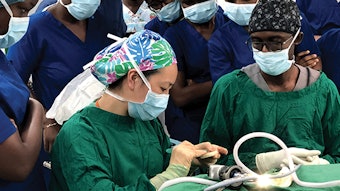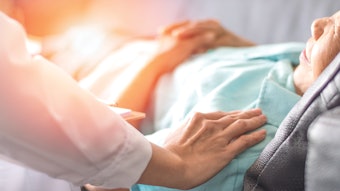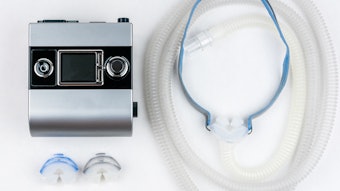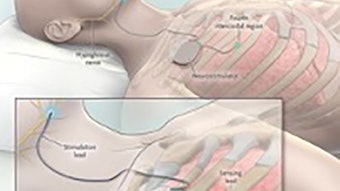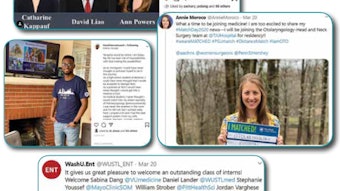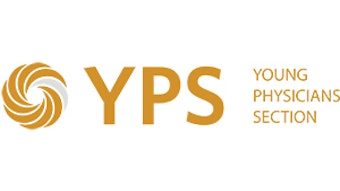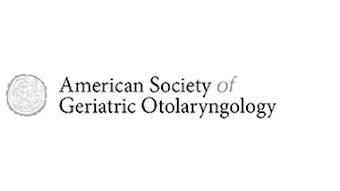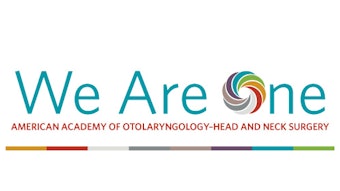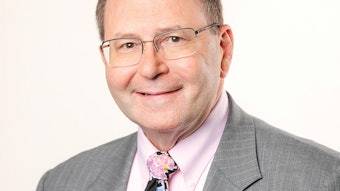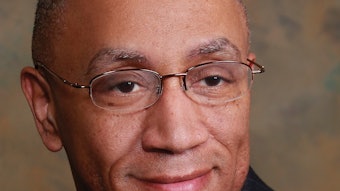Changing the Dialogue about Aging Voice
Raspy. High-pitched. Low volume. Weak. Tired. Patients have described the progressive changes over time in their voices in myriad ways. Although some may simply assume that these changes are part of the “normal aging” process, about 10 million elderly people do report a voice problem each year. The reported prevalence of dysphonia in the elderly ranges between 6 and 29 percent.
VyVy N. Young, MD, and Edie R. Hapner, PhD
Raspy. High-pitched. Low volume. Weak. Tired. Patients have described the progressive changes over time in their voices in myriad ways. Although some may simply assume that these changes are part of the “normal aging” process, about 10 million elderly people do report a voice problem each year.1,2 The reported prevalence of dysphonia in the elderly ranges between 6 and 29 percent.3-7 Attributed to the expected changes that occur over time, vocal fold atrophy or presbylaryngus is present in 24-30 percent of elderly dysphonic patients.3,8,9 Presbylaryngus results in loss of vocal fold muscle bulk and/or tone10-15 and when combined with aging-related alterations in the respiratory system (e.g., reduced respiratory volume and pressure), results in various manifestations of dysphonia, including raspy vocal quality, difficulty or pain with voice use, increased vocal effort or strain, and decreased vocal loudness or projection. This clinical presentation has been termed “presbyphonia.” Other symptoms, such as throat tightness/constriction, throat clearing, and even cough, have also been hypothesized to be related to underlying age-related changes to the phonatory and respiratory systems.5

Treatment-seeking for presbyphonia, while historically low, has steadily increased over the past 10 years.2 However, many older adults only seek medical care for reassurance that their voice changes are normal, and that there is no underlying malignancy. Studies have reported the rate of patients choosing not to treat age-related voice changes ranges between 40 and 80 percent.3,16-18 While it is important to understand a patient’s motivation for care, it is equally important to counsel patients that studies have demonstrated that presbyphonia, left untreated, may continue to deteriorate over time.19-21
The otolaryngologist’s initial assessment for the presence of presbylaryngus and resulting presbyphonia should include a detailed history-taking and thorough head and neck examination. Visualization of the larynx (i.e., at least laryngoscopy but ideally stroboscopy) is imperative in this population, as presbylaryngus is a diagnosis of exclusion, and other laryngeal disorders including, but not limited to, neuromotor diseases can result in similar patient complaints. Additionally, laryngeal disorders as a result of tobacco use, high vocal demands, or other medical comorbidities can occur simultaneously with changes due to aging and should be considered in treatment decision making.2,22-25 Stroboscopy in particular is vital to look for subtle changes to vocal fold anatomy and vibratory characteristics and degree of glottal closure. It is important to recognize that dysphonia, whether related to aging or another voice disorder, affects patients’ quality of life and functionality—occupationally, socially, and emotionally.
Treatment for vocal fold atrophy may include voice therapy, vocal fold augmentation surgery (including thyroplasty), and often a combination of both therapy and medical treatment, with results of treatment being highly variable. 2,16,17,19,26-28 While the treatment for presybyphonia can be approached from least invasive to most invasive options, it is critical to recognize that the details from the comprehensive examination, including degree of glottal closure, associated vocal fold vibratory characteristics, respiratory comorbidities, frailty, ability to participate in voice therapy/cognitive status, and impact of the patient’s quality of life, and motivation for therapy should all be part of the decision-making about which treatment would best meet the patient’s needs.29
A recent survey of laryngologists in the United States indicated that voice therapy is the most common first-line treatment for presbyphonia.30 However, voice therapy, like surgery, encompasses a broad range of options.31 Decision making in the goals of therapy; the particular methods/treatments used in therapy; the frequency, duration and intensity of voice therapy; and even candidacy for therapy should be based on the results of the speech language pathologist’s assessment. In general, voice therapy can be loosely described as targeting three causes of dysphonia:
- recalibration therapies – most often used with people with voice overuse/phonotrauma
- exercise-based exuberant voice therapies – most often used with people with vocal hypophonia/presbyphonia/many neuromotor based disorders
- muscle memory/muscle rebalancing therapies – used in primary muscle tension dysphonia/hyperfunctional underclosure in a normal larynx
Exercise-based exuberant voice therapies have been found to be useful in the behavioral treatment of presbyphonia.20 Research has shown that exercise-based exuberant voice therapies for presbyphonia, including vocal function exercises,16,26 phonation resistance training exercises,19,32 expiratory muscle strength training,33,34 and Lee Silverman Voice Therapy/LSVT,2 demonstrate increased vocal loudness, reduced vocal effort, increased vocal endurance, improved cough strength, and, most importantly, increased voice quality of life in presbyphonia.35
From a surgical perspective, vocal fold augmentation (both injection and thyroplasty) is hypothesized to counteract the loss of vocal fold muscle bulk or tone and has been shown to be helpful in some patients. This unfortunately is not uniform, and results in the literature remain variable. 17,36-38 These studies should be interpreted carefully, however, as they are limited by mixed study populations and small sample sizes. 27,36,38-42 Options for vocal fold augmentation range from temporary (e.g., carboxymethylcellulose or hyaluronic acid) to more lasting materials (e.g., calcium hydroxyapatite, autologous fat, Silastic or Gore-Tex implants)—all intended to result in vocal fold bulking and medialization. The use of a trial vocal fold injection (VFI) with a temporary material may be helpful to gauge symptom response to augmentation and to guide appropriate expectations prior to consideration of long-term or permanent surgical augmentation procedures.43 One study has demonstrated that a good response to trial VFI is suggestive of good response to long-term augmentation; however, for those patients who have poor response to trial VFI, their potential for improvement with long-term augmentation remains unclear.28 Because of the variability of response to augmentation, longer duration materials (e.g., calcium hydroxyapatite) are typically not advocated as first-line treatment for vocal fold atrophy. However, in appropriately selected individuals, long-term augmentation with autologous lipoinjection or thyroplasty can be highly effective in improving patients’ symptoms.
Surgical and behavioral treatments offer people with age-related voice changes the opportunity for improved voice quality of life. Recommendations for treatment of symptomatic presbylaryngus are best determined by consideration of a variety of factors: the patient’s degree of symptomatology, findings of the laryngeal exam (best with stroboscopy), and the speech-language pathologist’s assessment of stimulability and suitability for voice therapy. Most importantly, patients should be counseled that outcomes of treatment will not mimic their “old voice” or “the voice they had when they were much younger” but can provide improved vocal loudness and reduced vocal effort. Patients no longer have to “just live with” these voice challenges. While an individual optimal treatment has not yet been identified, carefully selected interventions do exist that can improve people’s ability to communicate effectively at work or volunteer activities, with family and friends, and even on the phone or at the drive-thru.
References
- Bhattacharyya N. The prevalence of voice problems among adults in the United States. Laryngoscope. 2014;124:2359-2362.
- Ramig LO, Gray S, Baker K. The aging voice: a review, treatment data and familial and genetic perspectives. Folia Phoniatr Logop. 2001;53:252-265.
- Davids T, Klein AM, Johns MM 3rd. Current dysphonia trends in patients over the age of 65: is vocal atrophy becoming more prevalent? Laryngoscope. 2012;122: 332-335.
- Golub JS, Chen PH, Otto KJ, Hapner E, Johns MM 3rd. Prevalence of perceived dysphonia in a geriatric population. J Am Geriatr Soc. 2006; 54:1736-1739.
- de Araújo Pernambuco L, Espelt A, Balata PM, de Lima KC. Prevalence of voice disorders in the elderly: a systematic review of population-based studies. Eur Arch Otorhinolaryngol. 2015;272:2601-2609.
- Roy N, Stemple J, Merrill RM, Thomas L. Epidemiology of voice disorders in the elderly: preliminary findings. Laryngoscope. 2007;117:628-633.
- Hannaford PC, Simpson JA, Bisset AF, Davis A, McKerrow W, Mills R. The prevalence of ear, nose and throat problems in the community: results from a national cross-sectional postal survey in Scotland. Fam Pract. 2005;22:227-233.
- Hagen P, Lyons GD, Nuss DW. Dysphonia in the elderly: diagnosis and management of age-related voice changes. South Med J.1996;89:204-207.
- Pontes P, Brasolotto A, Behlau M. Glottic characteristics and voice complaint in the elderly. J Voice. 2005;19:84-94.
- Gonçalves TM, Dos Santos DC, Pessin AB, Martins RH. Scanning electron microscopy of the presbylarynx. Otolaryngol Head Neck Surg. 2016;154:1073-1078.
- Roberts, T., R. Morton, and S. Al-Ali, Microstructure of the vocal fold in elderly humans. Clin Anat. 2011. 24(5): p. 544-51.
- Ximenes Filho JA, Tsuji DH, do Nascimento PH, Sennes LU. Histologic changes in human vocal folds correlated with aging: a histomorphometric study. Ann Otol Rhinol Laryngol. 2003;112:894-898.
- Sato K, Hirano M, Nakashima T. Age related changes of collagenous fibers in the human vocal fold mucosa. Ann Otol Rhinol Laryngol. 2002;111:15-20.
- Sato K, Hirano M. Age-related changes of elastic fibers in the superficial layer of the lamina propria of the vocal folds. Ann Otol Rhinol Laryngol. 1997;104:839-844.
- Hirano M, Kurita S, Sakaguchi S. Ageing of the vibratory tissue of human vocal folds. Acta Otolaryngol. 1989;107:428-433.
- Mau T1, Jacobson BH, Garrett CG. Factors associated with voice therapy outcomes in the treatment of presbyphonia. Laryngoscope. 2010;120:1181-1187.
- Gartner-Schmidt J, Rosen C. Treatment success for age-related vocal fold atrophy. Laryngoscope. 2011;121:585-589.
- Young VN. Patients’ attitudes regarding treatment for vocal fold atrophy. J Voice. 2019. doi: 10.1016/j.jvoice.2019.04.012. [Epub ahead of print]
- Ziegler A, Verdolini Abbott K, Johns M, Klein A, Hapner ER. Preliminary data on two voice therapy interventions in the treatment of presbyphonia. Laryngoscope. 2014; 124:1869-1876.
- Titze IR. Human speech: a restricted use of the mammalian larynx. J Voice. 2017;31:135-141.
- Tanner K, Sauder C, Thibeault SL, Dromey C, Smith ME. Vocal fold bowing in elderly male monozygotic twins: a case study. J Voice. 2010;24:470-476.
- Vaca, M., E. Mora, and I. Cobeta, The Aging Voice: Influence of Respiratory and Laryngeal Changes. Otolaryngol Head Neck Surg, 2015. 153(3): p. 409-13.
- Herrington-Hall BL, Lee L, Stemple JC, Niemi KR, McHone MM. Description of laryngeal pathologies by age, sex, and occupation in a treatment-seeking sample. J Speech Hear Disord. 1988;53:57-64.
- Griffith KA, Sherrill DL, Siegel EM, Manolio TA, Bonekat HW, Enright PL. Predictors of loss of lung function in the elderly: the cardiovascular health study. Am J Respir Crit Care Med. 2001;163:61-68.
- Huber JE, Spruill J 3rd. Age-related changes to speech breathing with increased vocal loudness. J Speech Lang Hear Res. 2008;51:651-668.
- Gorman S, Weinrich B, Lee L, Stemple JC. Aerodynamic changes as a result of vocal function exercises in elderly men. Laryngoscope. 2008;118:1900-1903.
- Hsiung MW, Pai L. Autogenous fat injection for glottic insufficiency: analysis of 101 cases and correlation with patients’ self-assessment. Acta Otolaryngol. 2006;126:191-196.
- Young VN, Gartner-Schmidt J, Rosen CA. Comparison of voice outcomes after trial and long-term vocal fold augmentation in vocal fold atrophy. Laryngoscope. 2015;125:934-940.
- Bradley JP, Hapner E, Johns MM 3rd. What is the optimal treatment for presbyphonia? Laryngoscope. 2014;124:2439-2440.
- Timmons Sund L, et al. Decision making in the treatment of presbyphonia. Presented at: Annual Symposium for the Professional Voice; May 27-31, 2020; Philadelphia, PA.
- Hapner ER. Voice therapy. In: Paparella MM, Selaimen da Costa S, Fagan JJ, eds. Paparella’s Otolaryngology Head and Neck Surgery. Jaypee Brothers Medical Publishers; 2020.
- Ziegler A. and Hapner ER. Vocal dose in older adults with presbyphonia: an analytic, cross-s ional study. J Voice. 2018. doi: 10.1016/j.jvoice.2018.09.005 [Epub ahead of print]
- Kim J, Sapienza CM. Implications of expiratory muscle strength training for rehabilitation of the elderly: tutorial. J Rehabil Res Dev. 2005;42:211-224.
- Kim J, Davenport P, Sapienza C. Effect of expiratory muscle strength training on elderly cough function. Arch Gerontol Geriatr. 2009;48:361-366.
- Berg EE, Hapner E, Klein A, Johns MM 3rd. Voice therapy improves quality of life in age-related dysphonia: a case-control study. J Voice. 2008;22:70-74.
- Shah RN, Deal AM, Buckmire RA. Multidimensional voice outcomes after type I Gore-Tex thyroplasty in patients with nonparalytic glottic incompetence: a subgroup analysis. Laryngoscope. 2013;123: 1742-1745.
- Hsiung MW, Lin YS, Su WF, Wang HW. Autogenous fat injection for vocal fold atrophy. Eur Arch Otorhinolaryngol, 2003;260:469-474.
- Hsiung MW1, Woo P, Minasian A, Schaefer Mojica J. Fat augmentation for glottic insufficiency. Laryngoscope. 2000;110:1026-1033.
- Su CY, Tsai SS, Chiu JF, Cheng CA. Medialization laryngoplasty with strap muscle transposition for vocal fold atrophy with or without sulcus vocalis. Laryngoscope. 2004;114:1106-1112.
- Hertegård S, Hallén L, Laurent C, et al. Cross-linked hyaluronan versus collagen for injection treatment of glottal insufficiency: 2-year follow-up. Acta Otolaryngol. 2004;124:1208-1214.
- Tan M, Woo P. Injection laryngoplasty with micronized dermis: a 10-year experience with 381 injections in 344 patients. Laryngoscope. 2010;120:2460-2466.
- Tan M, Bassiri-Tehrani M, Woo P. Allograft (Alloderm) and autograft (temporalis fascia) implantation for glottic insufficiency: a novel approach. J Voice. 2011;25:619-625.
- Carroll TL, Rosen CA. Trial vocal fold injection. J Voice. 2010;24:494-498.
